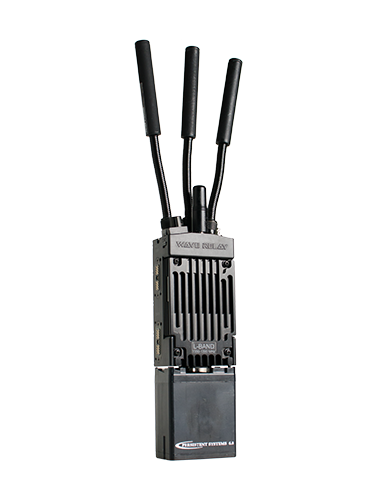Radio signals are transmitted and received using an antenna. An antenna can be mounted vertically, horizontally, diagonally, or in a combination of orientations.
Essentially, the orientation of the transmitter and receiver must match in order to get the best possible signal. For every degree of separation that the transmitter and receiver are out of alignment, signal loss and noise start to occur within your datalink.
For the best possible datalink, you will want the strongest signal with the least amount of interference (noise) – this is referred to as the Signal-to-Noise ratio (or SNR). The higher the SNR, the better.
A vertically polarised antenna at the transmitter communicating with a vertically polarised antenna at the receiver will provide a good, clear signal. Lots of signal, low background noise.








